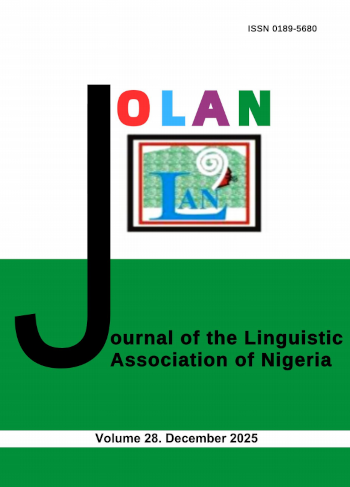Writing and Reading Skills of the Blind as an Aspect of Language Testing: An Overview
Keywords:
braille, language testing, reading, the blind, writing, visually impairedAbstract
This paper examines language testing in the writing and reading skills of the blind. The objective of the study is to examine aspects of teaching teachers need to consider while assessing the blind students. The paper looks at the types of writing system and their limitations during learning. It equally discusses basic strategies teachers need to adopt when teaching the blind students for effective teaching and learning. The paper adopts a descriptive analysis to give an overview account of basic skills of writing and reading of the blind which is largely neglected in linguistic discourse. The paper discovers that test selection, test administration and test interpretation are to be considered while assessing writing and reading skills of the visually impaired. Besides, the teacher needs a large dose of patience to inculcate these basic skills in the blind students given the limitations that theses category of students are not freely predisposed to getting and reading textbooks from the library coupled with other environmental challenges that inadequate facilities may impose on them. The study concludes that in other to teach the blind effectively, people around them will have to make some sacrifices to support them.
References
Adebisi, M. U. 2014. The challenges of physically impaired. Journal of Special Education. 4, 47-59
Americans with Disabilities Act of 1990, 42 U.S.C. 91 12101.
Daramola, D. F. 2012. Test and evaluation: Which method is appropriate? Nsukka Journal of Education. 9:2, 121-133.
Ejiogu, G. O. 2016. In search of better assessment for the visually impaired. Teachers’ Education Journal. 6, 38-52
Evans, R. C. 2014. Emerging trends in teaching mathematics. Journal of Special Education. 17, 75-86.
Geisinger, K. F. 1994. Psychometric issues in testing students with disabilities. Applied Measurement in Education, 7, 121-140.
Hooper, M. 1946. Braille contraction and children’s reading vocabularies: A statistical study. Unpublished Study 16
Lowenfeld, B. and Abel, G. L. 1967. Methods of Braille reading. San Francisco State College, Office of Educator, U.S Department of Health, Education and Welfare.
Phillips, S. E. 1994. High-stakes testing accommodations: Validity versus disabled rights. Applied Measurement in Education, 7, 93-120.
Section 504 of the Rehabilitation Act of 1973, 29 U.S.C. 91 701.
Smith, P. I. 2015. Special attention in teaching: How important is it? Journal of Adult Education. 4, 82-97.
Talabi, K. 2016. Teaching method in education: An introduction. Kaduna: Triumph Press
Tenopyr, M. L., Angoff, W. H., Butcher, J. N., Geisinger, K. F., and Reilly, R. R. 1993. Psychometric and assessment issues raised by the Americans with Disabilities Act (ADA). The Score, 15:4, 1-2, 7-1
Usman, R. 2015. Extra time for special students in education. Journal of Teaching and learning. 12, 135-146














